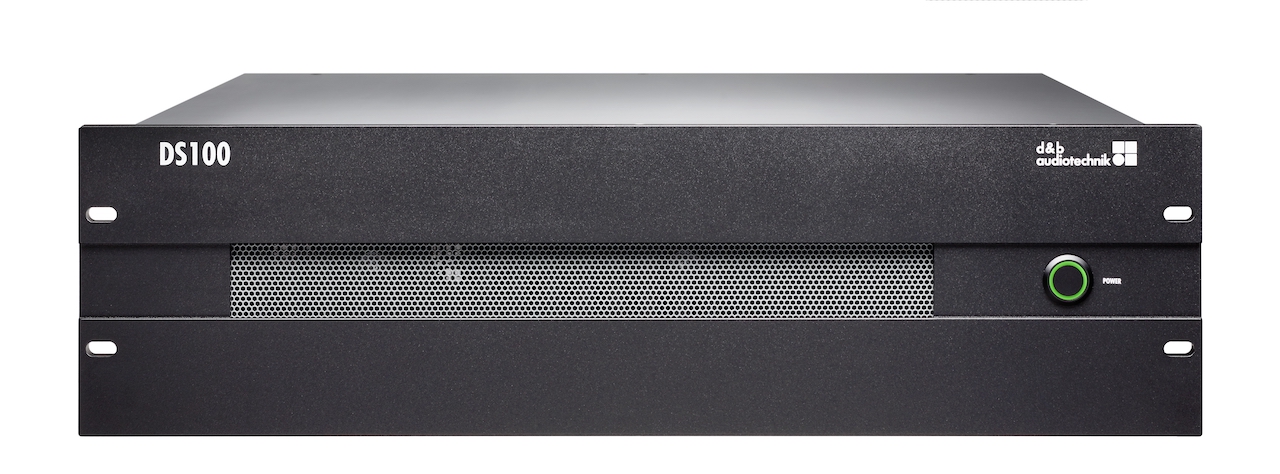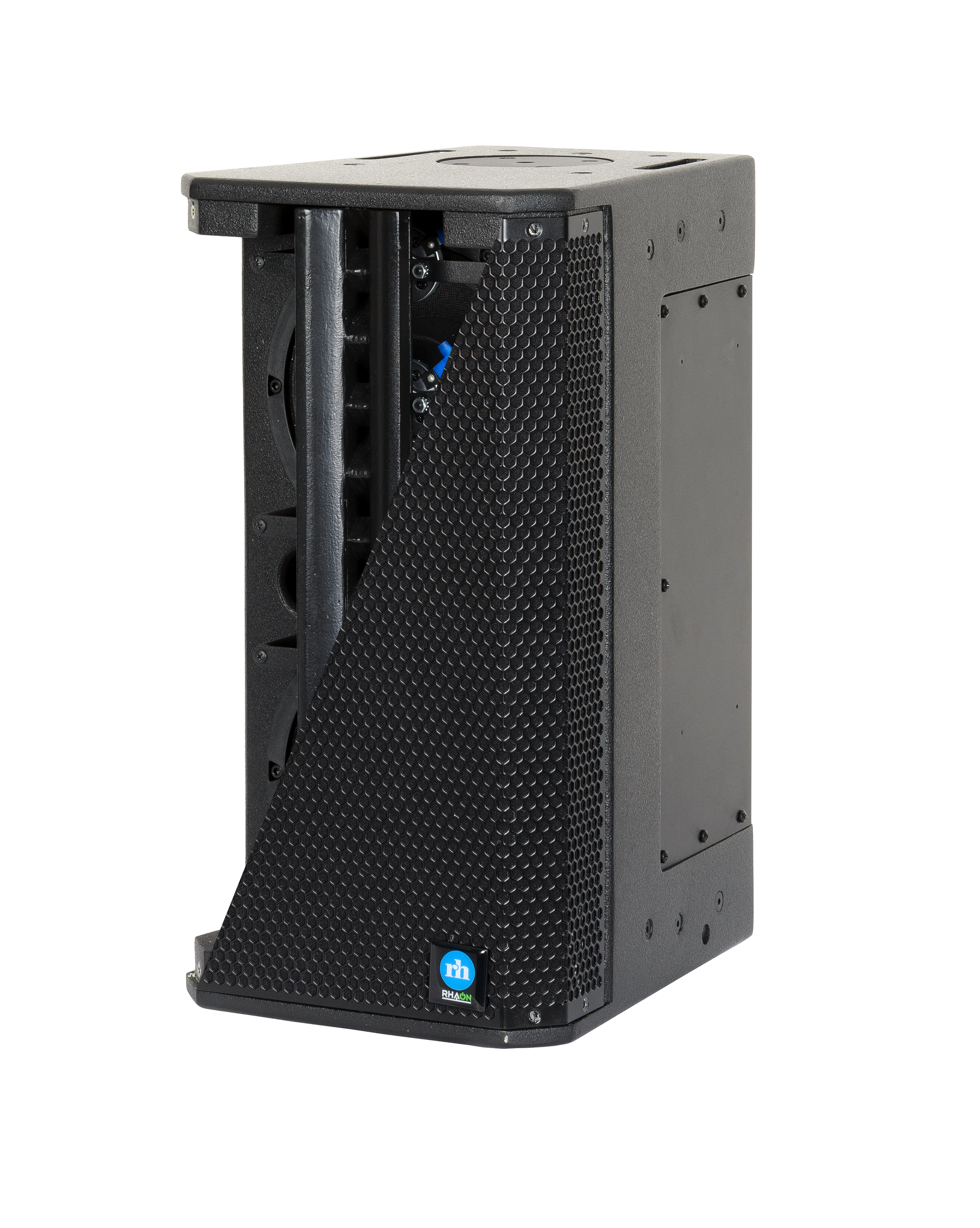Standard sound reinforcement systems had not evolved much over the past 40 years until recently, and the audio status quo is suddenly in flux.
While established system formats provide reasonable SPL (sound pressure level) coverage and intelligibility, they don’t address listener engagement. Listening “sweet spots” in the room are typically quite narrow with traditional SR systems, leaving whole sections of the audience in acoustically obstructed seats. Studies have shown that aural localization disassociated from the visual can decrease the level of a listener’s engagement, meaning that these audience members aren’t getting what they’re paying for.
From theaters to auditoriums, music and performing arts centers to houses of worship and conference centers, almost every venue can benefit from a thoughtfully designed immersive audio system.
Scroll through the gallery below to see the latest pro AV solutions for immersive sound.
A Deeper Connection
“The goal of an immersive system such as the d&b Soundscape is to create a deeper connection between the stage and the audience and enrich the experience of the listener,” said Marc Lopez, vice president of marketing at d&b Americas. “A Soundscape system can also increase the listening sweet spot, making every seat the best seat in the house.”

Nearly every kind of performance or presentation can benefit from an immersive system installed in entertainment and multipurpose venues. Lopez said, “Venues whose mission is to communicate a message, such as houses of worship and large conference spaces, are adopting Soundscape systems to enrich the connection to their congregation or attendees.”
Along with the experiential benefits for content creators, venue stakeholders, and audience members, there are technical benefits for the system designer, integrator, and sound engineer.
“While more loudspeaker positions may be required, smaller-format loudspeakers can typically be utilized with Soundscape compared to a typical LR or LCR system, improving sight lines, weight distribution, and even aesthetics,” said Lopez. By design, d&b Soundscape uses both level and delay to reproduce sound in the way that humans naturally hear, so multiple loudspeaker positions are simultaneously producing signal for a given sound object (input), each with a calculated level and delay emulating the way sound propagates and reflects.
[Coping with COVID-19: d&b audiotechnik]
“With this approach, the perceived loudness is equivalent to a system with larger components,” said Lopez. “The DS100 Signal Engine is aware of the loudspeaker positions and orientations that are set in the d&b ArrayCalc software, which allows it to calculate the precise level and delay times for each individual loudspeaker across multiple objects so there is a coherent wavefront for the entire listening area. Because of this, system tuning/alignment time is reduced to a fraction of what one would normally expect.”
The Soundscape system achieves more gain before feedback compared to a traditional system. “The sound engineer is also employing less EQ and dynamics, allowing them to focus on the content and not have to fight the system for headroom and stability,” said Lopez. “Also, with it being an object-based mixing system rather than bus-based, the sound engineer doesn’t need to worry about assigning inputs to outputs. He simply positions, while the processor does all the work to achieve proper spatialization.”
Depending on the system objectives determined by the content director and/or venue stakeholders, “Soundscape can be deployed as a 180 or 360 system, or anything in between, delivering accurate localization for the stage or audience areas, acoustic simulation, and providing a path for upgrading a space in stages if needed,” said Lopez.
Design for the Venue
The folks at Meyer Sound have been thinking a great deal about immersive audio and the tools that integrate into existing workflows. “The result of this effort is a new spatial sound design and mixing tool, Spacemap Go, that leverages Meyer’s experience with spatial audio software and scalable digital processing with advances in multitouch control interfaces,” said Steve Ellison, director of spatial sound at Meyer Sound.

Each system needs to be configured for the specific venue, taking into account factors including architecture, acoustic coverage, and use case, according to Ellison.
1. What are the architectural considerations of the space, including physical dimensions, construction materials, and room acoustics? This analysis leads to selection and placement of loudspeakers to provide the coverage desired.
2. Where can you install loudspeakers, how much power will they need to deliver, and what are their coverage requirements? In many rooms it won’t be possible to place loudspeakers overhead. You can still have a satisfying result without overheads, but you may consider using additional higher lateral systems as well as mid-height lateral systems to provide more envelopment. Systems can be designed that emphasize frontal imaging. In some cases these may be easier to install than surround systems, and in others they may not.
3. What content will be brought out to these systems? Sounds such as effects returns, keyboard pads, or backing voices can be effective when spread over a wide area, even behind the audience. On the other hand, rhythmic percussive sounds are easier to localize and can provide detail in an immersive mix, though they will be more sensitive to timing considerations. Smaller venues are able to effectively source sound all around the room because the room has a relatively small footprint. Techniques used in smaller venues won’t necessarily translate to larger ones. One size does not typically fit all with spatial audio system design.
[Creating the “Theater of the Future” with Immersive Audio]
Strong low-frequency energy has been known to help provide envelopment in room acoustics; the same holds true with multichannel sound design. Subwoofers, though large, can be hard to localize to, and therefore there will be some flexibility with where you can place them.
Once the system is designed, there are tools that give sound designers and mixers the ability to mix for the system, in the room, to the audience. This design and performance practice can and should be a natural process.
4. How will the system be operated? Will all the mixing be done live? Will snapshots be made for songs or scenes in a play? Is an external show control system being used? Systems can be chosen for both live and automated workflows.
5. Meet the production team. What is the story? How much rehearsal time is there? What is the operator’s skillset? It’s your job to know the technical possibilities and convey them to the creative team. They may not even think of putting voices overhead, yet this might make all the difference for the production’s impact.
The Next Level of Human Experience
Dudley McLaughlin, western regional sales manager at Renkus-Heinz, doesn’t feel that large venues are the only spaces in which listeners benefit from being surrounded by high-quality audio. “Anything that has a ‘walk through’ component can benefit, such as a museum or amusement park,” said McLaughlin. He makes the case that retail will need to reinvent its AV experience very soon. “We’re looking at a new definition for physical storefronts as a result of many changes. Offering something very genuine and immersive in a creative way will become quite important going forward.”

“Immersive audio is the idea of delivering your message in an extremely moving way,” he added. “It comes down to a desire from a person or entity to take something to the next level in terms of human experience.”
The more control you have over the placement of sound, the better. “From the technical side, you’re often looking at digital beam steering when it comes to immersive audio installations because it provisions the critical placement of sound exactly where you want it,” said McLaughlin.
“The other element is a bit more abstract: the ability to recognize beam steering enables a creative approach,” said McLaughlin. Immersive audio is not about installing longer black boxes and cables, but experiences. “You are crafting a soundscape, and when you get creative with that idea, you can add some flourish to the integration. You have to almost have a creative ‘sixth sense’ or creative reflex for what people want to hear, and then respond to it by providing what they expect—or surprising them with something different,” he said. “Without that level of creativity, there is no immersive audio.”
It is important to develop a collaborative partnership with the people who have the message to tell. “Sometimes they are people who know the message but have yet to be inspired creatively,” said McLaughlin. “You need to present the tools that help them succeed, and then collaborate in their success.”
This requires the manufacturer, system contractor, and end user to all buy in to a project at a very sincere and passionate level. “With that element in play, you have the opportunity to tell genuine stories and truly move others with your work,” concluded McLaughlin.



